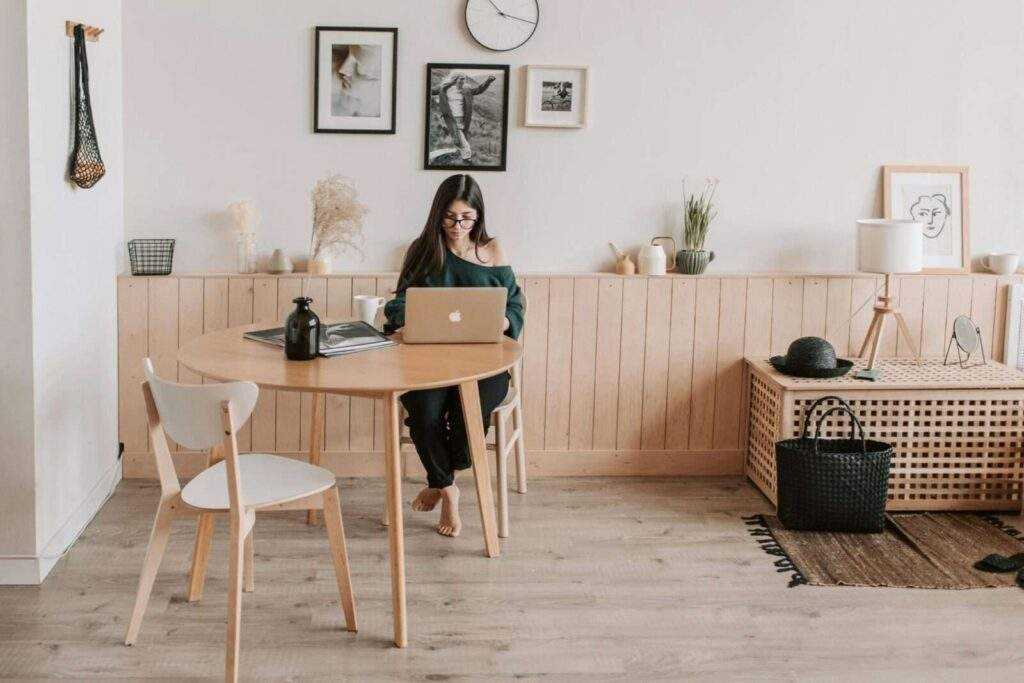Minimalism for a Greener Life: Declutter Your Way to Sustainability

Table of Contents
In today’s fast-paced and consumer-driven world, minimalism is emerging as a popular lifestyle choice. More than just a trend, it offers profound benefits for individuals and the environment. By embracing minimalism, you can live a simpler, more intentional life while contributing to sustainability. This guide will explore how decluttering can lead to a greener life, and how you can start your journey towards minimalism and sustainability.
The Rise of Minimalism
Minimalism is gaining traction worldwide as more people seek to simplify their lives and reduce stress. The core principles of minimalism involve living with less, prioritizing essential items, and eliminating unnecessary clutter. This lifestyle promotes mindful consumption and encourages individuals to focus on what truly matters. By adopting minimalism, you can create a more organized, peaceful, and purposeful living environment.
Beyond Aesthetics: Unveiling the Sustainability Connection
Minimalism goes beyond achieving a tidy and aesthetically pleasing space; it is intrinsically linked to environmental sustainability. Here’s how decluttering contributes to a greener life:
- Reduced Environmental Burden: Excessive consumption leads to increased production, which depletes natural resources and generates waste. By reducing the number of possessions, you can help lessen the environmental impact associated with manufacturing, packaging, and disposal.
- Decreased Clutter: Cluttered spaces can lead to inefficiency and stress. By decluttering, you create a more efficient living environment, reducing the need for energy and resources to maintain and clean a larger number of items.
Unlocking the Benefits of Minimalist Living
Minimalist living offers numerous benefits that extend beyond a clean and organized space:
- Reduced Environmental Impact: Minimalism encourages mindful consumption, leading to less waste and lower demand for resource-intensive products. This reduction in consumption can significantly decrease your carbon footprint and help combat climate change.
- Simplified Life and Reduced Stress: Clutter can be overwhelming and stressful. By decluttering, you create a more serene and organized environment, which can improve mental clarity and reduce anxiety.
- Increased Energy Efficiency: With fewer possessions and a more organized space, you can increase the energy efficiency of your home. A smaller, clutter-free living space requires less energy to heat, cool, and maintain.
- Fostered Gratitude and Focus: Minimalism helps you appreciate and focus on what truly matters. By removing excess items, you can develop a deeper sense of gratitude for the things you own and the experiences you cherish.
- Financial Savings: Avoiding impulse purchases and unnecessary clutter can lead to significant financial savings. By buying less, you save money and can allocate your resources to more meaningful experiences or sustainable investments.
Embracing minimalism is a powerful step towards a more sustainable and fulfilling life. By reducing your possessions and consumption, you can lessen your environmental impact, simplify your life, and foster a sense of gratitude and mindfulness. Start your minimalist journey today and experience the profound benefits of living with less. Together, we can create a more sustainable future by decluttering our lives and making mindful choices.

Environmental Impact of Clutter: It’s More Than You Think
A. The Hidden Costs of Clutter
Clutter in our homes is more than just a nuisance; it represents a significant environmental burden. The process of manufacturing and acquiring items we often don’t need has profound ecological implications:
- Resource Depletion: The production of goods requires vast amounts of raw materials. Trees are cut down for paper products, metals are mined for electronics, and petroleum is used for plastics. Excessive consumption accelerates the depletion of these natural resources, leading to deforestation, habitat destruction, and loss of biodiversity. World Wildlife Fund provides comprehensive information on the impact of resource extraction.
- Energy Consumption: Manufacturing processes consume a considerable amount of energy, primarily derived from fossil fuels. This energy use contributes to greenhouse gas emissions and climate change. The transportation of goods, from factories to warehouses to retail stores and ultimately to our homes, further adds to the carbon footprint. According to The Carbon Trust, reducing consumption can significantly lower energy demand and emissions.
- E-Waste: As technology evolves rapidly, electronic waste, or e-waste, becomes a growing concern. Many electronic devices have short lifespans and are quickly discarded in favor of newer models. E-waste contains hazardous materials such as lead, mercury, and cadmium, which can leach into soil and water, posing serious health and environmental risks. Environmental Protection Agency (EPA) offers resources on proper e-waste disposal and recycling.
B. From Clutter to Landfill: The Downstream Effects
The journey of clutter often ends in landfills, leading to severe environmental consequences:
- Landfill Overflow: As we discard items we no longer need, they accumulate in landfills. These sites are rapidly reaching capacity, leading to the expansion of landfill areas and the consumption of more land. Overflowing landfills can also become breeding grounds for pests and contribute to local air and water pollution. National Geographic covers the impact of landfill overflow on the environment.
- Pollution and Environmental Degradation: Items in landfills break down over time, releasing harmful chemicals and greenhouse gases such as methane, a potent contributor to climate change. Plastics, in particular, can take hundreds of years to decompose, continuously leaching toxic substances into the environment. Greenpeace details the long-term environmental impact of plastic waste.
- Waste Management Challenges: Effective waste management is crucial for minimizing the environmental impact of clutter. However, the sheer volume of waste generated by excessive consumption overwhelms waste management systems, leading to inefficiencies and increased costs. Recycling programs, while beneficial, are not a panacea, as not all materials can be recycled efficiently. Waste Management World provides insights into the complexities of waste management and recycling.
Clutter is more than an aesthetic issue; it has significant environmental repercussions. From resource depletion and energy consumption during production to the pollution and degradation caused by landfills, the hidden costs of clutter are substantial. By adopting minimalist and sustainable practices, we can reduce our environmental footprint, conserve resources, and contribute to a healthier planet.
Decluttering for Sustainability: A Practical Guide
A. Embracing the Minimalist Mindset
To embark on a sustainable lifestyle, it’s essential to adopt a minimalist mindset that emphasizes mindful consumption and a focus on quality over quantity. Here are the core principles:
- Questioning Needs vs. Wants: Before acquiring new items, ask yourself whether you truly need them or if they are simply a want. This practice helps in reducing impulse purchases and ensures that each item serves a purpose.
- Prioritizing Experiences and Quality: Focus on investing in high-quality, durable items that provide long-term value. Additionally, prioritize experiences over material possessions. Memories of a great vacation or a family outing often bring more joy than accumulating more stuff.
- Practicing Mindful Consumption: Adopt a conscious approach to shopping by researching products, supporting ethical brands, and choosing multi-functional items. Mindful consumption means being aware of the environmental impact of your purchases and making decisions that align with sustainability.
For more insights into minimalism, The Minimalists offer resources and tips on adopting a minimalist lifestyle.

B. Decluttering Your Physical Space: Step-by-Step Strategies
Decluttering can be a transformative process that not only cleans your space but also contributes to a more sustainable lifestyle. Here’s a comprehensive guide:
- The KonMari Method: Popularized by Marie Kondo, this method focuses on keeping only items that “spark joy.” Start by gathering all your belongings in one category (e.g., clothes) and then sort through each item, keeping only those that bring you joy. The rest can be discarded responsibly. Learn more about this method from Marie Kondo’s Official Website.
- The Room-by-Room Approach: Tackle your home one room at a time for a systematic decluttering process:
- Bedroom: Start with clothes and accessories. Use the KonMari method to sort through your wardrobe.
- Kitchen: Declutter cabinets, pantry, and refrigerator. Dispose of expired items and organize essentials.
- Living Room: Clear out magazines, books, and unnecessary decor. Focus on keeping items that enhance your living space.
- Bathroom: Sort through toiletries and medicines. Dispose of expired products responsibly.
- Garage/Basement: These areas often accumulate junk. Sort through tools, sports equipment, and seasonal items.
- Decluttering Challenges: For a more focused approach, participate in decluttering challenges like the 30-day minimalism game where you declutter one item on day one, two items on day two, and so on. This method gradually builds momentum and makes the process more manageable. Find inspiration for such challenges on Becoming Minimalist.
C. Repurposing, Donating, and Responsible Disposal
Decluttering sustainably means ensuring that unwanted items don’t end up in landfills. Here’s how to do it responsibly:
- Repurpose or Upcycle: Get creative with repurposing items. Old furniture can be transformed into new pieces, and jars can become storage containers. Websites like Upcycle That offer innovative ideas for upcycling everyday items.
- Donate Unwanted Items: Many items you no longer need can benefit others. Donate clothes, books, and household items to local charities, shelters, or thrift stores. Organizations like Goodwill and The Salvation Army accept various donations and redistribute them to those in need.
- Sell for a Second Life: If you have items of value that you no longer need, consider selling them. Platforms like eBay, Craigslist, and Facebook Marketplace make it easy to sell second-hand items.
- Dispose of Responsibly: For items that cannot be repurposed or donated, ensure they are disposed of responsibly. This is especially important for electronics and hazardous materials. Many cities offer e-waste recycling programs, and organizations like Earth911 provide resources for finding recycling centers.
Decluttering your home is more than just an organizational task; it’s a step towards a more sustainable and mindful lifestyle. By embracing a minimalist mindset, you reduce unnecessary consumption and its associated environmental impact. Through systematic decluttering, repurposing, donating, and responsible disposal, you can contribute to a healthier planet.
Take the first step today by questioning your needs versus wants and committing to a more minimalist, sustainable lifestyle. For additional resources and inspiration, explore blogs like Zen Habits and The Minimalists. Embrace the journey towards decluttering for sustainability and make a positive impact on both your life and the environment.

Decluttering Your Digital Life: A Sustainable Necessity
A. The Hidden Clutter of the Digital Age
In the digital era, clutter is not confined to physical spaces. Digital clutter, encompassing everything from unused apps to outdated devices, has significant environmental impacts:
Energy Consumption of Data Storage and Digital Devices:
- Storing data consumes a considerable amount of energy. Data centers, which house servers that store our digital information, require vast amounts of electricity to operate and cool.
- The carbon footprint of our digital activities, from streaming videos to saving files, contributes to greenhouse gas emissions.
Environmental Implications of E-Waste:
- The rapid turnover of electronic devices leads to a growing e-waste problem. Old phones, laptops, and other gadgets often end up in landfills, where they can release harmful substances.
- E-waste recycling rates are low, and many devices contain valuable materials that, if properly recycled, could reduce the need for mining new resources.
For more information on the impact of digital clutter, visit The World Counts and Greenpeace.
B. Declutter Your Digital Space: Practical Tips
Reducing digital clutter can help minimize its environmental footprint and improve your efficiency. Here are some actionable steps:
Organize and Delete Unnecessary Files, Photos, and Emails:
- Regularly clean out your digital storage. Delete files, photos, and emails that are no longer needed. This not only frees up space but also reduces the energy required for data storage.
- Utilize tools like Google Photos for automatic photo organization and Clean Email to manage your inbox effectively.
Unsubscribe from Unused Subscriptions and Notifications:
- Review and cancel subscriptions to services you no longer use. This reduces the data and energy consumption associated with maintaining those accounts.
- Turn off notifications for apps and services that you don’t need, which can also improve your focus and reduce device usage.
Consider Cloud Storage Solutions that Prioritize Energy Efficiency:
- Opt for cloud storage providers that emphasize sustainability and energy efficiency. Companies like Google Cloud and Microsoft Azure have made significant strides in reducing their carbon footprints.
- Regularly back up and delete old data from your cloud storage to keep it streamlined and efficient.
Extend the Lifespan of Electronics through Proper Maintenance and Repairs:
- Maintain your devices by keeping them clean, updating software, and replacing batteries when necessary. This can extend their useful life and delay the need for new purchases.
- When devices do become obsolete, recycle them responsibly. Programs like Apple’s Trade In and Best Buy’s Recycling Program offer convenient recycling options.
For more tips on managing digital clutter, explore resources from Digital Declutter and The Minimalists.
Decluttering your digital life is not just about improving productivity; it’s a crucial step towards sustainability. By reducing digital clutter, you can decrease energy consumption and minimize e-waste, contributing to a healthier environment. Start by organizing and deleting unnecessary files, unsubscribing from unused services, choosing energy-efficient cloud storage, and maintaining your devices for longer use.

Minimalist Living: Beyond Decluttering
A. Minimalist Practices for Daily Life
Minimalism is more than just tidying up physical and digital spaces; it’s a lifestyle that promotes simplicity, sustainability, and mindful consumption across various aspects of life:
Minimalist Meal Planning:
- Reduce Food Waste: Plan meals carefully to minimize over-buying and use leftovers creatively to reduce food waste.
- Mindful Consumption: Opt for locally sourced, seasonal ingredients whenever possible. Supporting local farmers reduces carbon emissions from transportation and supports sustainable farming practices.
Minimalist Shopping:
- Mindful Habits: Practice intentional shopping by prioritizing quality over quantity. Choose items that serve multiple purposes and have longevity.
- Sustainable Brands: Seek out brands that prioritize ethical production practices, fair trade, and use eco-friendly materials. Certifications like Fair Trade or B Corp indicate commitment to sustainability.
Minimalist Beauty Routine:
- Simplicity in Beauty: Simplify your skincare and beauty routine by opting for multi-purpose products with natural ingredients.
- Reduce Packaging Waste: Choose products with minimal or recyclable packaging to minimize environmental impact. Look for refillable options to further reduce waste.
Minimalist Travel:
- Pack Light: Travel with only the essentials to minimize luggage weight and reduce carbon emissions associated with transportation.
- Eco-Friendly Choices: Select eco-friendly accommodations that prioritize sustainability, such as hotels with energy-efficient practices or eco-lodges. Use public transportation or opt for walking and cycling to explore destinations sustainably.
For further minimalist living tips and inspiration, explore resources from The Minimalists and Becoming Minimalist.
B. The Power of Minimalism: A Ripple Effect for Change
Minimalism extends beyond personal lifestyle choices; it has the potential to create positive ripple effects in broader societal and environmental contexts:
- Reduced Consumption: By consuming less and making deliberate choices, minimalists reduce their environmental footprint, including energy use and waste generation.
- Influence and Advocacy: Minimalists often lead by example, influencing others to adopt sustainable practices and mindful consumption habits. Sharing experiences and insights can inspire friends, family, and communities to embrace sustainability.
- Circular Economy: Embracing minimalism promotes a circular economy where products are used longer, repaired, repurposed, and recycled. This approach minimizes waste, conserves resources, and reduces the need for new raw materials.
Minimalism encourages a mindset shift towards valuing experiences, relationships, and personal well-being over material possessions. By adopting minimalist practices in daily life, individuals contribute to a more sustainable future and inspire others to do the same.

Building a Sustainable Wardrobe: A Minimalist Approach
A. Curating a Capsule Wardrobe
A capsule wardrobe is a curated collection of versatile clothing items that can be mixed and matched to create numerous outfits. By focusing on quality pieces that withstand trends, you reduce the need for frequent purchases and contribute to sustainability.
Websites and Resources:
- Project 333: A minimalist fashion challenge advocating for a wardrobe of 33 items or less for 3 months. It encourages mindful consumption and creative styling. Visit Project 333
- Un-Fancy: A blog by Caroline Joy Rector that explores minimalist fashion and offers practical tips on creating a capsule wardrobe. Explore Un-Fancy
B. Quality over Quantity
Investing in high-quality clothing ensures durability and reduces the environmental impact of fast fashion. Quality garments last longer, require fewer replacements, and often use sustainable materials and ethical production practices.
Websites and Resources:
- The True Cost: A documentary film that examines the social and environmental impacts of fast fashion and encourages consumers to consider the true cost of their clothing purchases. Watch The True Cost
- Fashion Revolution: A global movement advocating for transparency, sustainability, and ethics in the fashion industry. It encourages consumers to ask brands, “Who made my clothes?” Join Fashion Revolution
C. Minimalist Wardrobe Essentials
Building a minimalist wardrobe starts with identifying essential items that serve multiple purposes and can be styled for various occasions. This approach reduces clutter and promotes a more sustainable consumption pattern.
Essential Items Include:
- Basic Tops and Bottoms: Versatile pieces like plain tees, classic shirts, and well-fitting jeans or trousers.
- Layering Pieces: Cardigans, blazers, or sweaters that can be layered for different seasons and styles.
- Dresses and Skirts: Select a few timeless styles suitable for both casual and dressier occasions.
- Footwear: Durable shoes such as sneakers, flats, and boots that complement your wardrobe.
- Accessories: Minimalist jewelry and scarves that add versatility and personality to your outfits without overwhelming them.
Websites and Resources:
- Into Mind: A blog offering practical advice on minimalist fashion, including tips on identifying and curating wardrobe essentials. Visit Into Mind
- The Minimalist Wardrobe by Jessica Rose Williams: A guide that helps individuals build a minimalist wardrobe with a focus on quality, versatility, and personal style. Explore Jessica Rose Williams
D. Sustainable Clothing Choices
Making sustainable choices in your wardrobe involves supporting brands with ethical practices, opting for second-hand or vintage clothing, and learning basic repair skills to extend the lifespan of your garments.
Sustainable Choices Include:
- Second-hand and Vintage: Explore thrift stores, consignment shops, and online platforms for unique finds that reduce textile waste and support a circular economy.
- Ethical Brands: Choose brands that prioritize ethical sourcing, fair labor practices, and use eco-friendly materials. Look for certifications such as Fair Trade or GOTS (Global Organic Textile Standard).
- Clothing Repair Skills: Learn basic sewing techniques to mend minor damages and prolong the life of your garments, reducing the need for replacements.
Websites and Resources:
- ThredUp: An online thrift store offering a wide selection of second-hand clothing items for men, women, and children. Shop at ThredUp
- Eco-Stylist: A platform recommending sustainable and ethical men’s clothing brands that prioritize environmental and social responsibility. Explore Eco-Stylist
By adopting a minimalist approach to your wardrobe, prioritizing quality over quantity, and making sustainable choices, you can build a wardrobe that reflects your personal style while minimizing environmental impact. Start your journey towards a sustainable wardrobe today and contribute to a more ethical and eco-friendly fashion industry.
Minimalism and Mindfulness: Cultivating a Sustainable Mindset
A. Minimalism as a Journey, Not a Destination
Minimalism is not about achieving a perfectly curated space overnight but embracing a continual process of simplification and intentional living. It encourages individuals to evaluate their belongings regularly, letting go of excess, and focusing on what adds value to their lives.
Websites and Resources:
- The Minimalists: A blog and podcast by Joshua Fields Millburn & Ryan Nicodemus, promoting living with less and finding meaning in simplicity. Visit The Minimalists
- Becoming Minimalist: A blog by Joshua Becker offering practical advice on embracing minimalism for a more intentional and fulfilling life. Explore Becoming Minimalist
B. The Power of Gratitude
Minimalism encourages practicing gratitude by shifting focus from accumulating possessions to appreciating what one already has. By decluttering and simplifying, individuals can develop a deeper appreciation for the essentials and cultivate contentment in their daily lives.
Websites and Resources:
- Tiny Buddha: An online community that explores mindfulness, gratitude, and personal development through articles and forums. Visit Tiny Buddha
- Greater Good Science Center: Provides science-based practices for fostering gratitude and well-being, promoting a mindful approach to life. Explore Greater Good Science Center
C. Breaking the Cycle of Consumerism
Minimalism challenges the culture of consumerism by encouraging mindful consumption and reducing reliance on material goods. By consciously choosing quality over quantity and avoiding unnecessary purchases, individuals reduce their environmental footprint and contribute to a more sustainable future.
Websites and Resources:
- Story of Stuff: A project that explores the lifecycle of consumer goods and advocates for sustainable consumption habits. Watch Story of Stuff
- Center for a New American Dream: Provides resources and campaigns to shift societal values and consumption patterns towards more sustainable and equitable practices. Visit Center for a New American Dream
D. Living with Intention
Minimalism promotes living with intention by focusing on experiences, relationships, and personal growth rather than material possessions. By prioritizing meaningful experiences and investing time and resources in activities that enrich life, individuals can achieve greater fulfillment and reduce their environmental impact.
Websites and Resources:
- Zen Habits: A blog by Leo Babauta focusing on mindfulness, simplicity, and living intentionally to achieve personal and professional goals. Explore Zen Habits
- Live Your Legend: Offers tools and resources for discovering passions, setting goals, and living a purpose-driven life aligned with personal values. Visit Live Your Legend
Embracing minimalism and mindfulness fosters a sustainable mindset that prioritizes simplicity, gratitude, and intentional living. By adopting these principles, individuals can contribute to a more sustainable world while enhancing their own well-being and satisfaction with life. Start your journey towards a minimalist lifestyle today and discover the transformative power of living with less.

Minimalism for a Greener Life: Declutter Your Way to Sustainability – FAQ
This FAQ section tackles common questions you might have about minimalism and its connection to sustainability:
1. Isn’t minimalism just about having a clean and stylish home?
Minimalism goes beyond aesthetics. It’s about living intentionally with less and focusing on quality over quantity. While a clutter-free space is often a byproduct, the true purpose is to minimize environmental impact and live a more sustainable life.
2. I don’t have a lot of stuff! Can minimalism still benefit me?
Absolutely! Minimalism isn’t just about getting rid of things. It’s a mindset shift that encourages mindful consumption and prioritizing experiences. Even small steps like decluttering digital clutter or practicing minimalist meal planning can make a difference.
3. Where do I even begin to declutter?
Start small and choose an area that feels manageable. The KonMari method, which focuses on keeping items that “spark joy,” is a popular approach. Consider room-by-room decluttering or setting decluttering challenges for specific areas.
4. I’m worried about throwing things away. What are some sustainable decluttering options?
Repurpose items whenever possible! Donate unwanted items in good condition to charity or sell them to give them a second life. Look for local recycling options for specific materials, and dispose of electronics responsibly.
5. How can I declutter my digital life?
Unsubscribe from unused subscriptions and delete unnecessary files, photos, and emails. Consider cloud storage solutions with a focus on energy efficiency. Remember, even small digital decluttering efforts can reduce your environmental footprint.
6. Is minimalism just about getting rid of stuff?
Minimalism extends beyond decluttering. It’s about applying minimalist principles to daily life, like minimalist meal planning to reduce food waste, minimalist shopping habits to prioritize sustainable brands, or a minimalist beauty routine with multi-purpose products.
7. I love fashion! Can minimalism still work for me?
Absolutely! Embrace the concept of a capsule wardrobe – a collection of high-quality, versatile pieces that can be easily mixed and matched. Invest in timeless styles that will last longer and reduce the need for frequent replacements. Consider sustainable clothing options like second-hand or vintage finds.
8. Isn’t minimalism boring?
Minimalism is about living with intention and focusing on experiences rather than material possessions. It can lead to a more fulfilling life with less stress and clutter, allowing you to explore new experiences and passions.
9. How can I stay motivated on my minimalist journey?
Minimalism is a process, not a destination. Celebrate your progress, no matter how small. Connect with online minimalism communities for support and inspiration. Remember, every step towards a more sustainable lifestyle matters!
10. What resources can help me learn more about minimalism and sustainability?
This blog post is a great starting point! Explore the resources section for recommended books, documentaries, websites, and even a downloadable checklist to guide you on your minimalist journey.
Minimalism is more than just an aesthetic choice—it’s a transformative lifestyle that holds profound benefits for both individuals and the planet. By reducing clutter and focusing on what truly matters, minimalism promotes:
- Environmental Responsibility: Each decision to simplify reduces our ecological footprint. By consuming less and choosing sustainable products, we contribute to conserving resources and minimizing waste.
- Personal Well-being: Clearing physical and mental clutter fosters a sense of peace, clarity, and freedom. It allows us to prioritize experiences over material possessions, nurturing deeper connections and personal fulfillment.
To embark on your minimalist journey:
- Start Small, Aim High: Begin by decluttering one area at a time—your closet, digital devices, or living space. Each step towards simplicity is a step towards a more sustainable lifestyle.
- Choose Quality: Opt for durable, timeless items that serve multiple purposes and support ethical brands committed to sustainable practices.
- Embrace Mindful Living: Shift focus from accumulating possessions to cherishing experiences that enrich your life and positively impact the world around you.
The Future of Minimalism and Sustainability:
Looking forward, minimalism has the potential to catalyze significant change:
- Shaping Consumer Habits: As minimalism gains traction, it encourages conscious consumerism. Demand grows for products that are responsibly sourced, durable, and designed with longevity in mind.
- Driving Innovation: Businesses are responding to this shift by innovating sustainable solutions and adopting circular economy principles. This evolution towards eco-friendly practices benefits both people and the planet.
By championing minimalism and sustainability:
- Lead by Example: Share your minimalist journey to inspire others and amplify the message of sustainable living. Small actions collectively make a big difference.
- Advocate for Change: Support initiatives and policies that promote environmental stewardship and encourage sustainable practices in communities and industries.
In conclusion, minimalism isn’t merely about reducing possessions—it’s a powerful catalyst for positive change. By embracing simplicity and sustainability, we can create a future where our choices enrich lives today while preserving resources for generations to come. Let’s continue this journey together, forging a path towards a more mindful, sustainable world.








